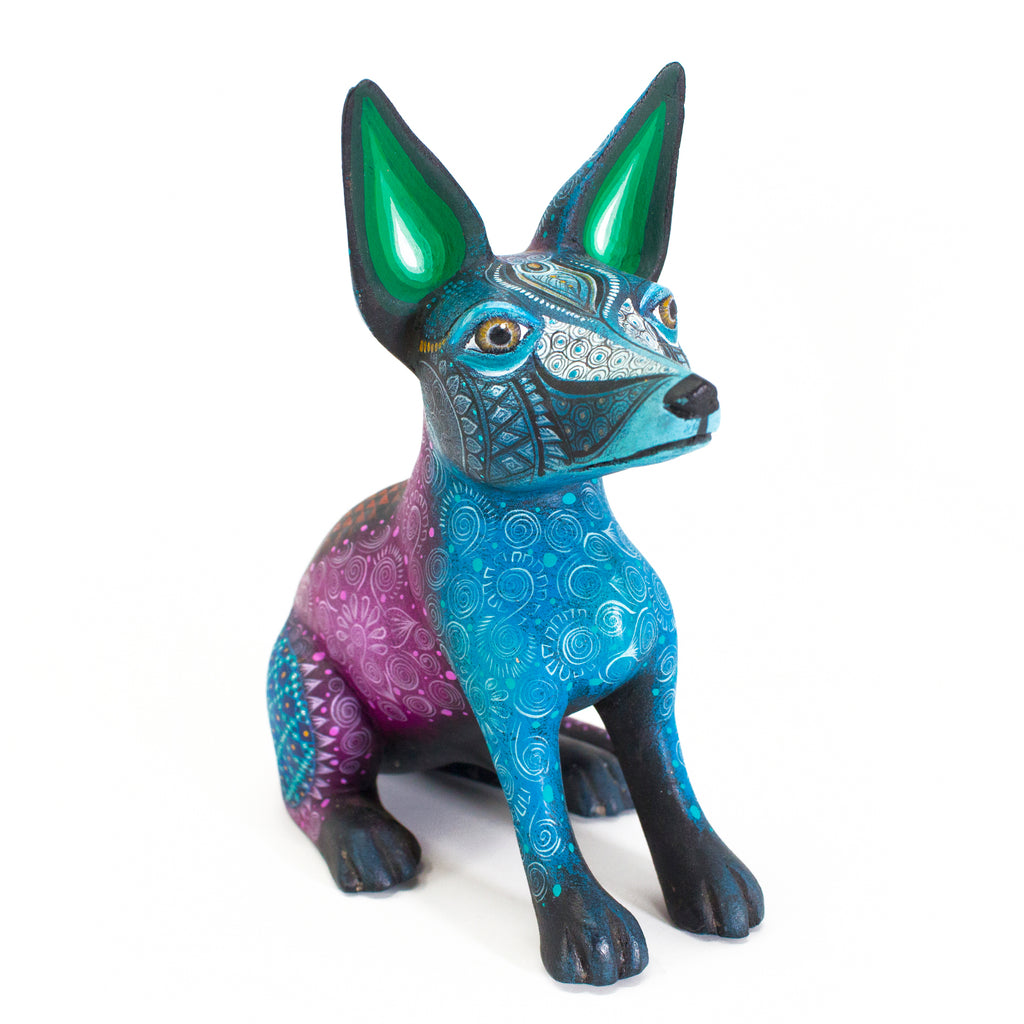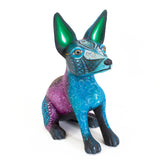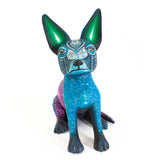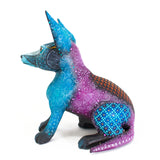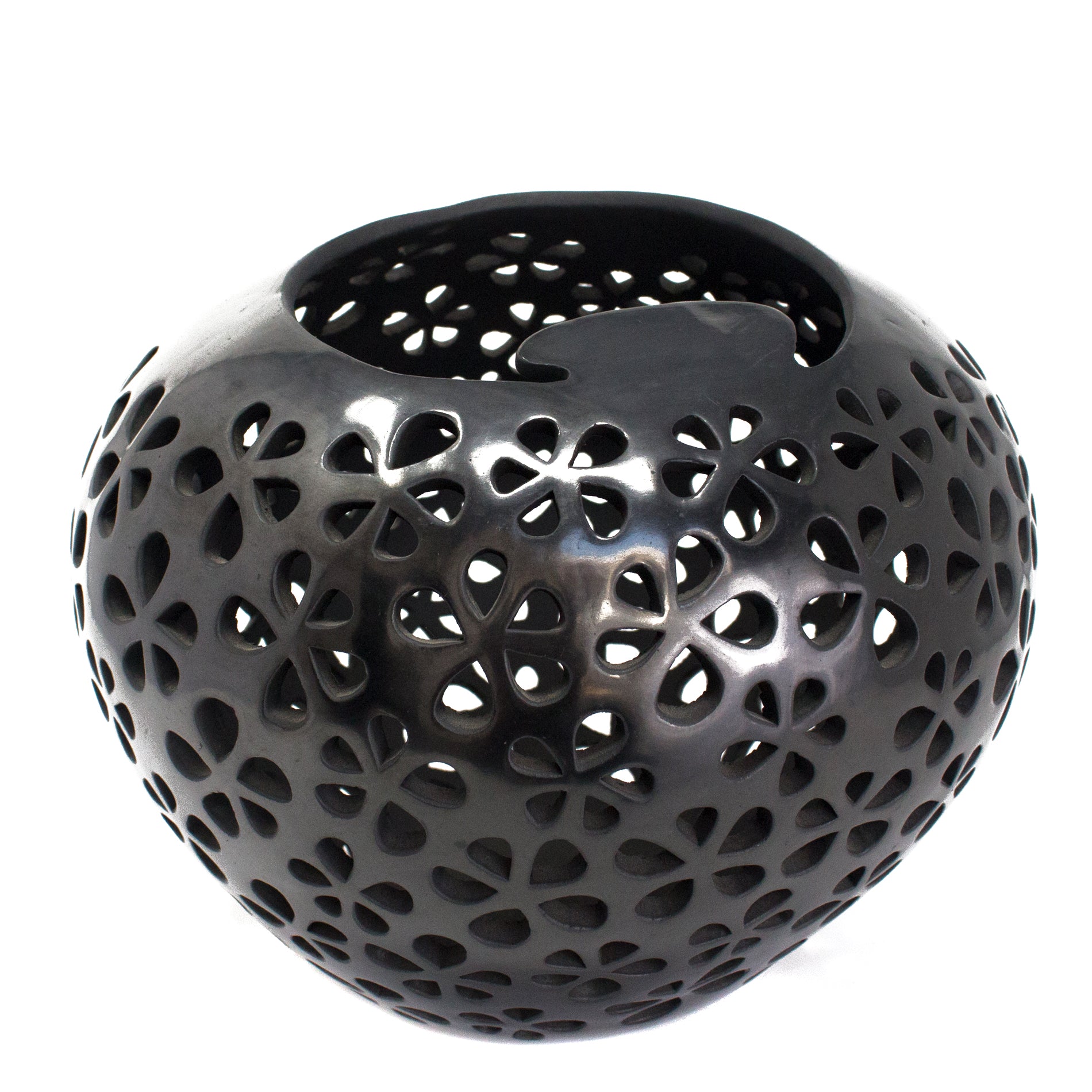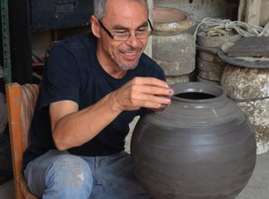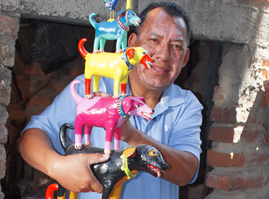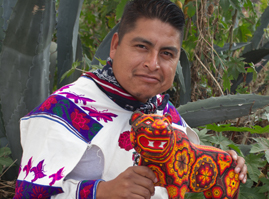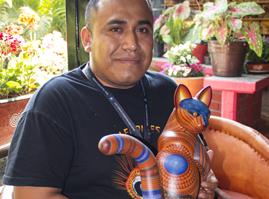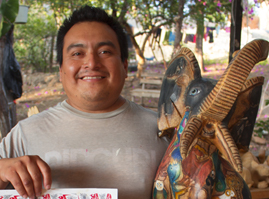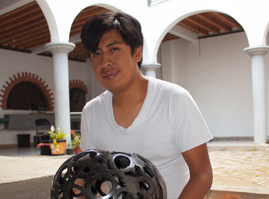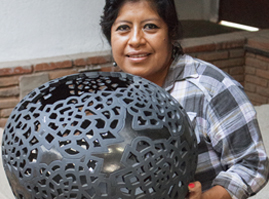Small Xolotzcuintle Dog Alebrije (Green Ears), Copal Wood
- Sold By: ESTEBAN FABIAN MENDEZ
- Type: ALEBRIJES
An icon of Mexican Culture, these beautiful Xolotzcuintle Alebrijes perfectly capture the essence of these Mythical creature, both venerated and loved around the world. Carefully sculpted from Copal Wood, and beautifully decorated by Master Artisan Esteban Fabian Mendez in Oaxaca, his pieces are a true example of tradition and innovation.
Details:
This piece is currently not in stock. Once your order is processed, the artisan will receive an order to produce a replica of the item you ordered. Given the handcrafted and artistic nature of their pieces, your purchase may have some variation in color and shape. It is these same variations that make every item unique.
Elaboration times range from 30-45 days.
Measurements:
5.51" high x 2.76" wide x 6.30" long
Weight:
0.23 lbs
Visiting Oaxaca is like entering the magical world of Alebrijes, which more than being a craft, are widely considered to be true pieces of art. The knowledge required for the elaboration of these intricate wood sculptures is passed from one generation to the other. People in San Martin Tilcajete and Arrazola, Oaxaca, are born and raised deeply connected to the creation of these figures, all as a part of their own family environment. Usually, the locals live surrounded by copal logs, tools and paints inside their houses, as well as the traditional process of carving the sculptures. This is how children and young members of families learn day by day this craft from their elders.
The Process.
It all starts with the selection of the wooden piece to be used, the figure to be sculpted is decided according to the log’s shape, the base of the log is cut out with a Machete, and then the artisan starts searching for the balance of the figure’s shape and weight, to decide whether the figure will stand vertically or horizontally.
The artisan then makes drawings on the sides, giving him reference on where he will make rough cuts with his machete, he then proceeds to cut out details with smaller knives, which contribute to the sculpture by giving it expression and movement, each piece is unique, they can be reproduced, but there will always be subtle differences because of the 100% manual process, based on the original log’s shape and the hand-carving and sanding.
The carved piece is left to dry in the sunlight, once its outer body has dried, it is carefully sanded, the sawdust is kept in case of the need of repairs. After the sanding, the piece is again left to dry under the sun. In some cases, a large piece can take up to two years to dry out entirely.
Once the piece has completely dried, it is then taken through the repair process, using a variety of tools, artisans open the cracks in the wood and are then filled with copal wedges and a mix of the previously collected sawdust mixed with sealant. The wedges are then sanded, and smoothed. These processes can take up to a month on larger pieces.
After sanding and smoothing the sculpture, artisans apply a base color coating, it could either be a solid tone or in some other cases even gradients, after applying this first paint bath, artisans usually let the piece rest, they wait and see if there are any cracks on the wood for them to amend.
The artisans proceed to decorate the pieces with different brush types, each artisan has a style of their own for decorating, from the simplest traces to the most intricate designs and prehispanic patterns. After decorating the piece, it is covered with a lacquer spray to protect it.
In the past, artisans were only producing animal figures, but this started changing when younger artisans started introducing new subjects that contributed to alebrijes as a diverse art form.
Suddenly, you could also find dragons, monsters, and even aliens! From this moment on, the artisan’s creative potential had become free to explore and create, which consumers and collectors all started appreciating and searching for.
Some of the figures or themes of the sculpts became very popular and started being repeated, some such as dogs, armadillos or iguanas, but these figures not only represent the local wildlife, they are also common symbols of local folklore.
Since the 80s, artisans started exploring different figures, such as giraffes, dogs, cats, elephants, zebras, deer, and even some more exotic types, like dolphins, sharks and other fish. All of this exploration is what set the stage for a second wave of exploration from younger artisans that gave (way to) fantastic figures such as dragons and aliens.

Esteban Fabian Mendez
At the young age of 10, Esteban learned to make alebrijes from his father, Ismael Fabian Mendoza, Esteban was always attracted to the arts, and he didn't want to set aside the family tradition, so he started by carving smaller figures, and as he became better, his father taught him how to paint and allowed him to do his own pieces. Nowadays, Esteban runs his workshop joined by his three sons, located in San Martin Tilcajete, Oaxaca, it is called "Una inspiracion de vida" (A life inspiration), where dreams, imagination and creativity converge. In each piece, Esteban captures his art, imagination, creativity, fantasies and dreams.
“My art has a long process that starts by finding a good piece of wood from the fields, grabbing my tools, which are knives, machetes and gouges, so I can start shaping the wood, once the piece acquires its shape, I proceed to let it dry under the sunlight, this process usually takes a couple weeks, and sometimes it can even last months, depending on the piece's size, it is important to cure the wood, for that we use either gasoline or diesel, this helps us eliminate insects or plagues that could affect the dried wood. Once the piece has dried completely, we proceed to decorate it applying beautiful designs coming from my imagination and creativity, so that we attain a quality piece with intricate designs".
Esteban is an innovator by excellence, achieving unique alebrijes with themes such as dragons, depending on the shape of the logs, making them unique and unrepeatable.
He always tries to pull off something new and different, without setting aside the essence of what an alebrije is and what his father had taught him, all while preserving the tradition. He is very glad that his sons love this traditional art form just as he does, and in collaboration, they have achieved pieces that have gone beyond several borders.
Esteban has been awarded several times for his career producing alebrijes, and in collaboration with his sons, they have acquired state and nationwide awards.
Esteban wants every piece he crafts to express his feelings, and that each customer or collector that acquires one of his pieces can feel just how special his art is.
With 44 years of career and even more on the horizon, Esteban is a Master Artisan of alebrijes.

